Have you ever faced the challenge of how to check continuity in a long wire? It can be a daunting task, especially if you’re not sure what to look for or have limited experience. That’s why we’ve created this comprehensive guide to continuity in long wires – with useful tips and insider knowledge about the best methods for checking continuity. We’ll answer common questions and provide plenty of information that will help you identify any issues in your long wire!
Continuity in General
It states that if a continuous function is given two points and it passes through them, then it must also pass through all the points between them. Continuity can be seen as a form of connectivity, in which all elements within a system have some degree of connection to one another. In terms of calculus, continuity means that a function has no abrupt changes at any point on its graph. This concept allows us to accurately determine values (such as derivatives of integrals) by breaking up large problems into smaller chunks and solving those pieces individually.
In more general terms, continuity refers to consistency over time or space. This could be applied to physical movements, operation procedures, or patterns of behavior. It suggests that whatever is begun should carry on in the same manner throughout its duration. For example, if a company adheres to a certain set of protocols during times of crisis, then it is expected that they will follow the same protocols when future crises arise. The idea here is that continuity allows for smoother transitions and helps preserve stability through change. [1], [2]
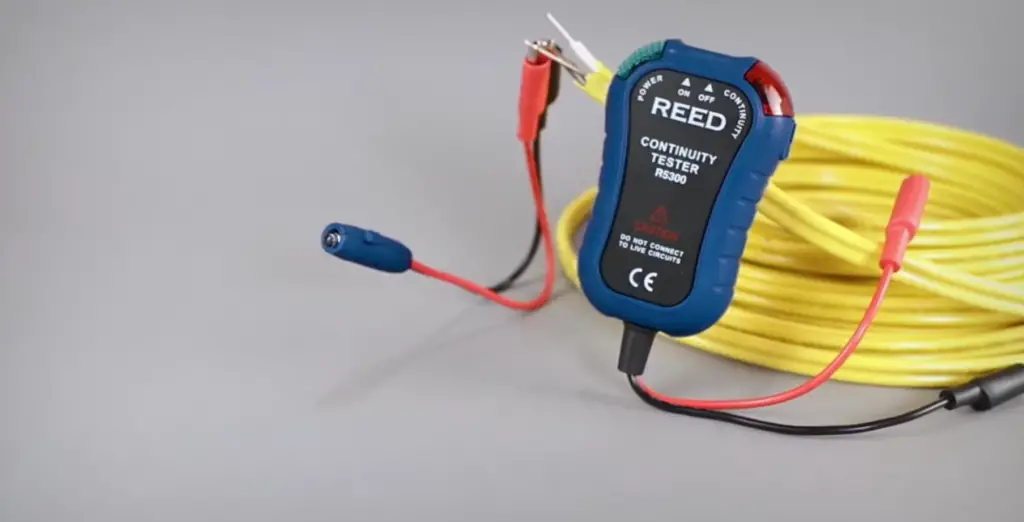
What You Need to Check Continuity of Long Wires
Checking continuity is an important factor when it comes to long wires. This is because continuity issues can cause electrical components to malfunction, leading to all sorts of problems. To correctly check continuity, you’ll need two tools: a multimeter and wire strippers.
You can use it to check for resistance, voltage, and current, among other things. The wire strippers are used to strip away the insulation on the wires so you can connect them to the probes of your multimeter. This will allow you to accurately measure all of its electrical properties.
A multimeter
A multimeter is a device used to measure multiple properties of electricity, such as voltage, current, resistance and continuity. It is an instrument that is both versatile and highly reliable. With its wide range of functions, a multimeter can be used for many different purposes, ranging from testing electrical components to troubleshooting electronic devices.
At the most basic level, a multimeter consists of two probes connected to a display. The probes are attached to different points in an electrical system or circuit. When the meter is switched on, it measures the difference in potential between those two points and displays the reading on its screen. This could be voltage, current or resistance depending on which measurement mode has been selected by the user.
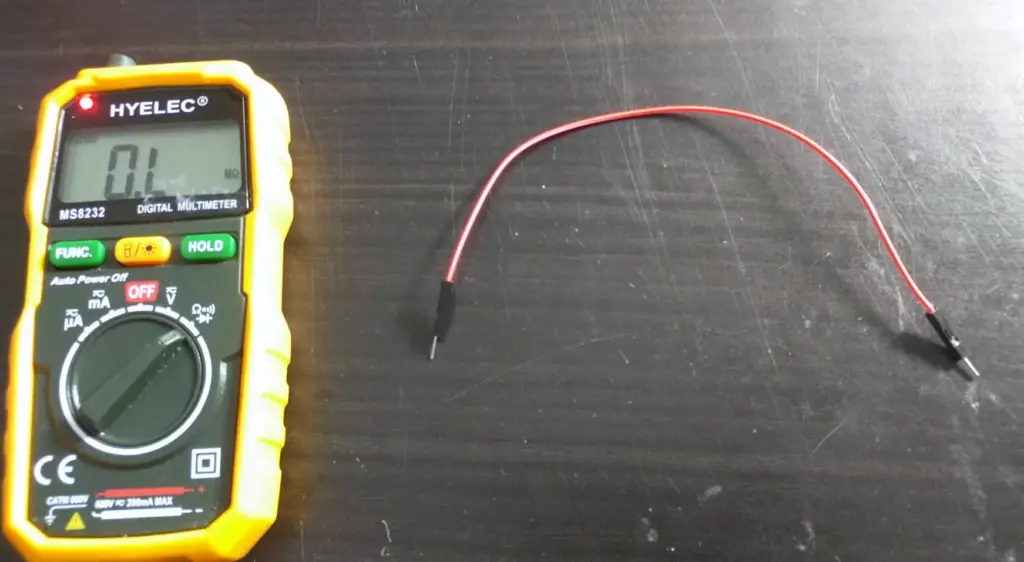
Wire cutters
Wire cutters are a type of hand tool that is used for cutting through wires, cables, and other types of metal objects. These tools can be made from various materials such as steel, aluminum, carbon fiber, and even titanium. The most common design of wire cutters has two handles and a set of sharp blades that can easily slice through materials like copper or soft metals. Some models even feature self-adjusting blades that can automatically adjust to different thicknesses without the need for manual adjustment. Wire cutters are available in a variety of sizes to accommodate different gauges of wire.
The use of wire cutters is essential in electrical work because it allows electricians to safely and quickly remove insulation off wiring when making repairs or renovations. It is also used in DIY projects and hobbies where cutting through wires is necessary, such as jewelry-making and model building. Wire cutters are also handy for other tasks like removing the insulation from electrical cords to replace outlets or when constructing a custom wiring harness.
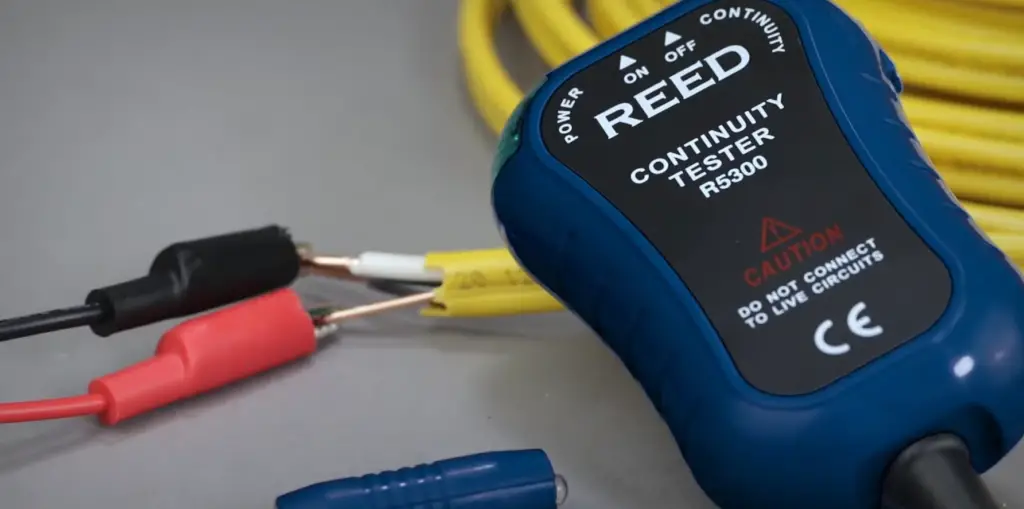
In addition to manual wire cutters, powered models can be found that enable faster work with less effort. Powered models typically run on electricity or compressed air and feature blades that spin at high speeds to quickly cut through cables and other tough materials. For heavier duty applications, hydraulic wire cutters may be needed due to their immense strength and durability. [1], [2]
How to Check Continuity in a Long Wire
Now that you know what you need to check continuity in a long wire, it’s time to learn how to do it. The process of checking continuity is simple and straightforward.
Learn the basics of electricity and wiring
Before you begin checking continuity in a long wire, it’s important to understand the basics of and wiring. Electricity is created when electrons flow through a circuit or wires. It is typically measured using parameters such as voltage, current, resistance and continuity.
Voltage is the pressure that causes electrons to move from one point to another. Current is the rate at which those electrons flow through a component or wire. Resistance measures how easily electrons can move through the component or wire. Continuity refers to how well the two points are connected — if there’s an electrical connection between them, then they have good continuity; if not, then they have poor continuity.
You should also be familiar with color codes for electrical wiring. Wires are typically covered in colored insulation, and the colors often denote the function of a particular wire. For example, black means hot (live) and white means neutral.
Gather your tools and safety gear
Once you understand the basics of electricity and wiring, it’s time to gather your tools and safety gear. It’s important to always wear protective glasses when working with wires or electricity — even if you think you won’t be exposed to any sparks or shocks, it’s best to err on the side of caution.
Test your tools beforehand to make sure they are in proper working condition. You will need a multimeter, wire cutters and insulated pliers. The multimeter is the most important tool — it’s used to measure voltage, current, resistance and continuity. Wire cutters are necessary for cutting through wires, while insulated pliers are helpful for gripping and twisting wires without getting shocked.
Set the multimeter to continuity mode
Once you have all of your tools in place, it’s time to set the multimeter to continuity mode. The multimeter should have a dedicated continuity setting that will be clearly labeled or indicated by an icon on the dial. Set the multimeter to this setting and make sure it is zeroed correctly — this means that when nothing is connected to the probes, there should be no reading at all.

Detach the ends of the long wire
Now that you have the multimeter set to continuity mode, it’s time to detach the ends of the long wire. Depending on the type of wire, this can be done by cutting off or unscrewing a connector from one or both ends. Make sure that you take extra care not to damage any insulation when doing this. Don’t forget to turn off the power to the wire at the breaker box before you begin working.
Check for continuity between each end
After detaching the ends of the wire, it’s time to check for continuity between each end. The multimeter has two probes, one positive and one negative. Connect the negative probe into the COM port of the multimeter and the positive probe into the VΩmA port.
Set the range on the multimeter to 200 ohms, and then connect the positive probe to one end of the wire and the negative probe to the other. The multimeter should give a reading that indicates how much resistance is present between those two points. If there is no resistance, or very low resistance, then there’s good continuity between them.
Repeat this step for each end of the long wire — if all of your readings indicate good continuity, then you can be confident that your wiring is in good condition.
Values close to zero indicate a good connection, while higher values indicate a weak or broken connection with no continuity. If you find that one of the connections is weak or broken, then it’s important to repair or replace the wire as soon as possible.
If your multimeter has a sound signal that things are even easier — simply connect the probes to each end of the wire, and if you hear a beep indicating good continuity, then your wiring is in good shape.
Finally, don’t forget to reconnect any connectors or wires that you detached when checking for continuity. This will help ensure that your long wire remains safe and secure. [1], [2]
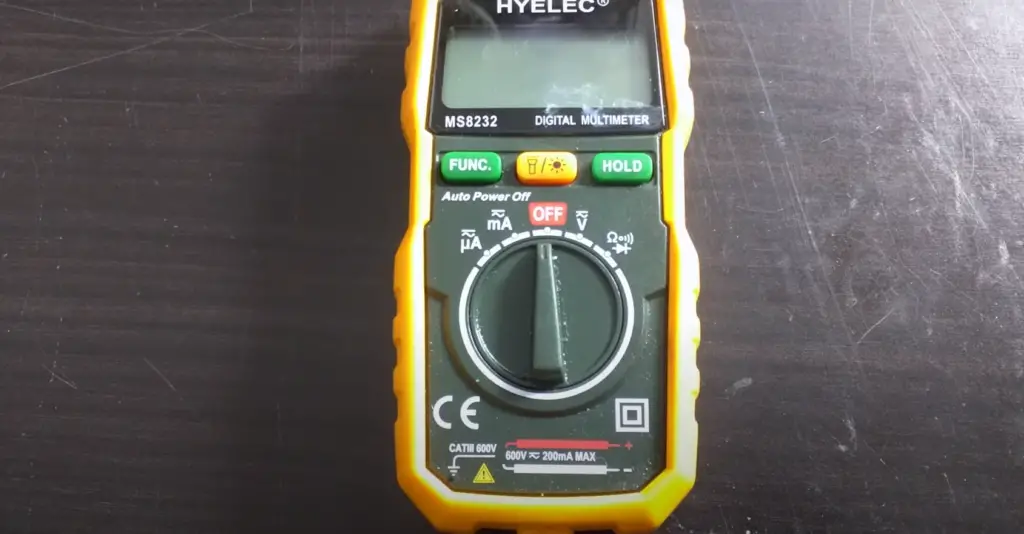
FAQ
How do you know if a wire is live or neutral?
The easiest way to determine if a wire is live or neutral is to use an electrical tester. This tool will instantly tell you whether the wire is energized or not without having to physically touch it. If the light on the tester lights up, then the wire is live. You can also use a multimeter to check for continuity in a long wire by connecting one probe to each end of the wire and checking for a small voltage reading. If there is no voltage present, then the wire is likely dead or not connected properly.
What tool can identify a live wire?
The most common and accurate tool for this purpose is a multimeter.
Using the multimeter to check continuity in a wire is simple: set the dial on the device to measure resistance (typically marked with an omega sign) and touch two of its probes on both ends of the wire. If there is no break in the circuit, you will get a reading close to 0 ohms. This indicates that the wire has good continuity.
If you don’t have access to a multimeter, another option for checking continuity in a long wire is using an ohmmeter or test light. An ohmmeter works in much the same way as a multimeter but it is designed specifically to check for continuity in a circuit. It will give a reading of 0 ohms if the circuit is working properly, and no resistance if there is a break in the wire. A test light also works by detecting whether or not electricity is flowing through the circuit. If there is no power running through the wire, the test light will not turn on, which indicates that there is an issue with continuity along the wire.
How do you check long-distance wire continuity?
Checking the continuity of long-distance wires is an essential part of any electrical system installation. This process involves verifying that all connections in the wiring are properly connected and supplying power to its intended destination. The most reliable way to test for continuity in a long wire is to utilize an ohmmeter, which is a device used to measure resistance through electricity.
When checking the continuity of a long wire, first ensure that all connections are securely tightened and that no bare metal surfaces can be seen. Then begin by selecting an appropriate range on your ohmmeter based on the expected resistance of the circuit you are testing; this will usually correspond with a value between 0-200Ω. Connect one probe to one side of the wiring harness and the other probe to the opposite side. If a reading between 0-200Ω is displayed, then the connection has good continuity.
It’s important to note that checking long wire continuity should only be done after all electrical connections have been made. Additionally, if you’re working with an old or outdated wiring system, it’s recommended to check for any shorts in the circuit as well as verifying that there are no open circuits present prior to performing a continuity test.
Can I check the continuity on the live wire?
No, it is highly recommended that you switch off the main power before checking continuity in a long wire. Checking the continuity of a live wire could put you and your equipment at risk of electrical shock or fire.
What do you use to test if wires are live?
To test if wires are live, you can use a multimeter to check for continuity. A multimeter is an electronic device used to measure various parameters such as voltage, current and resistance. When testing for continuity in a long wire, the two terminals of the multimeter must be connected together. If there is a closed circuit between these two points then this indicates that the wire has continuity and is therefore ‘live’ or active.
How do you check if a wire is broken with a multimeter?
Using a multimeter to check if a wire is broken is a simple process. First, you need to select the continuity setting on your multimeter. This will often be represented by either an “Ohms” symbol or a diode symbol. Then, touch one of the probes to one end of the wire and the other probe to the opposite end. If the circuit is complete, the multimeter should beep or show some kind of indication that there is continuity in the wire.
If there is no continuity, then it means that either an open circuit exists or that there is a break somewhere along the length of the wire. To determine which it is, you can use additional testing tools such as an ohmmeter or voltage tester. An ohmmeter will measure the resistance in the wire, and a voltage tester can be used to detect if electricity is being conducted through the wire.
If you’re trying to check continuity in a long or hard-to-access wire, you may need to use a special testing device such as an inductive ammeter or megohmmeter. These devices are designed for checking long wires, and they’ll be able to give you more accurate readings than your multimeter alone. Additionally, these devices also have added features such as alarms that will notify you when there is a break in the wire.
Useful Video: How to Check Wire on Field Using Multi Meter | Long Wire Testing Using | Wire Continuity Testing
Conclusion
Checking continuity in a long wire is an important step to ensure the integrity of your electrical connections. Having a basic understanding of what continuity is and how it can be measured with tools such as multimeters or ohmmeters will help you diagnose any potential problems in your wiring system. Additionally, ensuring proper wire insulation, avoiding sharp bends and twists, and using quality components can all contribute to preventing a continuity issue from occurring in the first place. Armed with this knowledge, you should now have the confidence to check any long wires for continuity confidently and efficiently.
Ultimately, checking the continuity of a long wire is not only essential for your safety but also necessary for reliable performance of any electric device or installation that uses such wires. Taking time to inspect each connection point properly before moving forward with your device is an important part of the process and can help you avoid any costly repairs down the line. With these tips, you should be well on your way to properly checking continuity in a long wire. Good luck, and happy wiring!
References
- https://toolsweek.com/how-to-check-continuity-in-a-long-wire/
- https://suggesthow.com/how-to-check-continuity-in-a-long-wire/





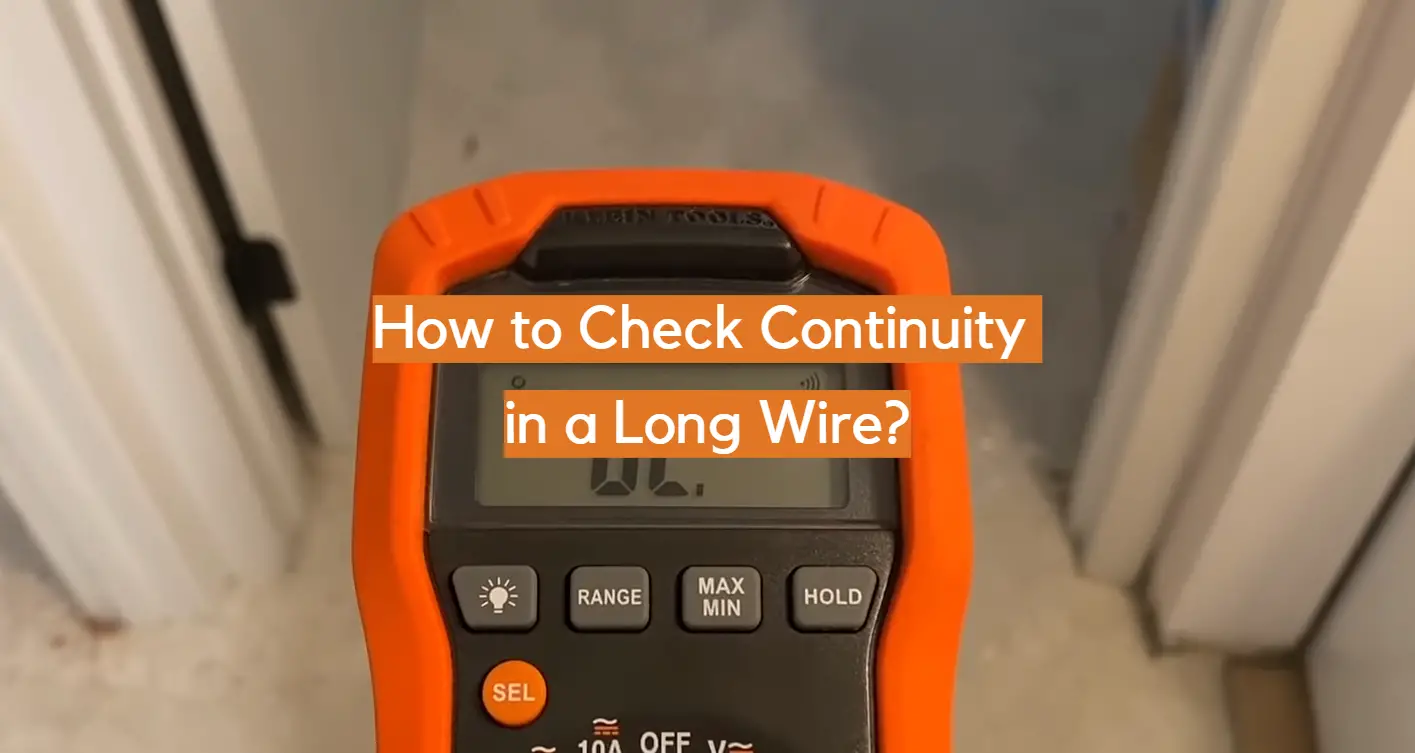





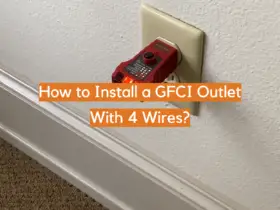
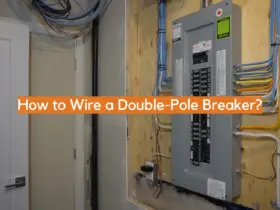
Leave a Reply